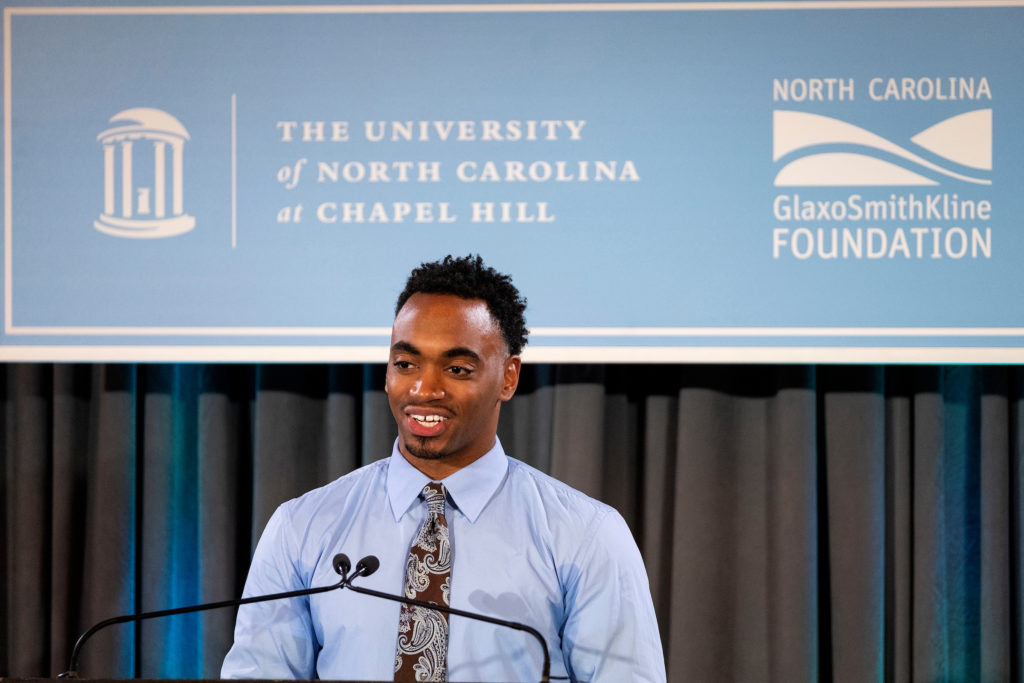There is great truth in the old adage “out of sight, out of mind.”

We can’t truly understand and discuss the things we can’t see, and that’s exactly why the First Nations Graduate Circle (FNGC) at UNC-Chapel Hill is organizing the symposium.
In light of controversies surrounding the use of stereotypical “Indian” images and epithets for sports team mascots or Halloween costumes, the group of American Indian graduate and professional students decided that this year, the annual symposium will focus on visibility and representation.
The FNGC hopes the symposium will amplify American Indian voices and increase the visibility of American Indians on campus. The event will take place at 1 p.m. March 27, 2015, at the George Watts Hill Alumni Center and will be open to the public.
“Visibility is always a good starting point,” said Liz Ellis, who is the co-president of FNGC with Brooke Bauer, both doctoral students in the history department. “You can’t have a conversation about American Indians if you can’t see the population.”
Ellis said there’s a lot of interest and curiosity in the student body about how culture represents Native people.
“Students want to talk about the [Washington] Redskins, about dressing up as Indians and about similar issues. So we are hoping that talking about visibility and representation at the symposium will be an opportunity to address those very difficult topics,” she said.
Native blogger and scholar Adrienne Keene will speak at the symposium. In her writing, she points out that much of the visibility American Indians do have is through inaccurate and often negative stereotypes: the feather-decked noble warrior, the hyper-sexualized “Pocahottie,” the war-painted savage.
“What does a nerdy Indian look like?” Keene asked. “That’s an image that’s not existent in any media.”
It turns out, a “nerdy Indian” might look something like Keene, who earned her doctorate in education at Harvard University and is now a postdoctoral fellow at Brown University. She’s the self-described “millennial, nerdy, doctorate-holding, mixed-race, Cherokee woman” behind Native Appropriations, her blog that pushes back against stereotypes of American Indians. As the blog’s audience grew into the thousands, Keene’s posts fueled a national conversation about what it means to be a contemporary Native person.
Ellis and Bauer agree that social media projects like Keene’s have been crucial in giving American Indians visibility in the public sphere.

“I really do think that social media has done an amazing job in making Indian people heard – in making them visible,” Ellis said. “I remember as a kid growing up never seeing Indians in the news, ever.”
Keene takes on popular representations of Native people in her posts. Her Halloween post this year warned partiers to “Step away from the ‘Indian’ costume.” Keene reminded readers that dressing up as an “Indian” perpetuates harmful stereotypes and the marginalization of people who have been fighting genocide for centuries.
“I want to help folks develop a critical lens so when they see the Land O’Lakes ‘butter girl’ in the grocery store or Peter Pan on the TV, they don’t just continue to accept these images,” Keene said.
Keene said she wants to replace those negative stereotypes with positive representations of real Native people and culture. But the difficulty, Keene said, is that many Americans have little contact with Native people.
“My blog is the first time many Americans have heard a Native person’s voice, and they realize that I talk like – like you!”
Keene said her blog and other Native social media can help change that.

Keene’s blog also provides a window into Keene’s own struggle to discover and maintain her own Native identity. Keene said her identity is constantly evolving but that what stays with her is a responsibility to preserve and celebrate her heritage in the face of societal pressure to assimilate.
“For me, what I really feel now is that my role as a contemporary Native person is to be a survivor and to continue to resist,” Keene said. “It took a lot of generations fighting to maintain their identity for me to be here and to even be able to identify as a Cherokee woman.”
Keene is enthusiastic about speaking at the Native Leaders Symposium, co-sponsored by The Graduate School.
“I think any event that can highlight contemporary voices and talk about the success and the good things going on in Indian Country is really important, and I’m really proud to be a part of that,” Keene said.
Ellis said the conversations about the representation of American Indians are “always uncomfortable and hard.” The symposium seeks to generate a safe space for people to ask questions.
“People, no matter where they come from, are often worried their questions will be considered inappropriate,” Bauer said.
But that’s exactly the purpose of the symposium. “We are all here to talk it through together,” Ellis said.
Ellis, Bauer and the other graduate and professional Native students of FNGC also hope that bringing in leaders like Keene will facilitate those discussions. UNC-Chapel Hill American Indian alumni and current graduate students will also participate in panels and discussions.
♦ Written by Andrea Patiño Contreras and Jess Clark, master’s degree candidates in the UNC-Chapel Hill School of Journalism and Mass Communication.




